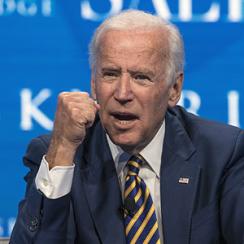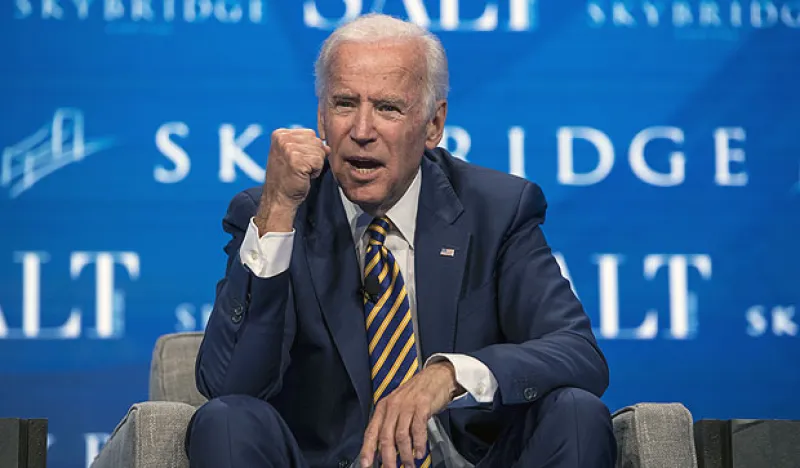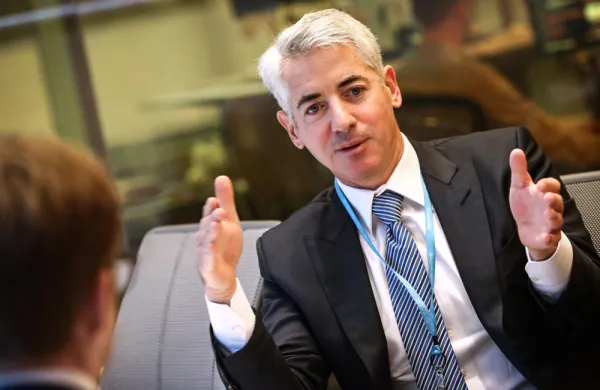
| |
| Former U.S. Vice President Joe Biden (Credit: David Paul Morris/Bloomberg) |
For the first time in recent memory, a prominent hedge fund manager publicly called out the industry for what, over nearly a decade, has been one of its dirty but rarely spoken secrets: The current low-risk, low-return mentality is not the hedge fund industry that initially charged, and more importantly earned, its high fees.
Speaking Thursday at the SkyBridge Alternatives Conference (SALT), the outspoken activist — who launched his first hedge fund, Gotham Partners, 25 years ago and now runs Pershing Square Capital Management — asserted, “In 1992 hedge funds were the place where you made high returns.” He noted that the bogey at the time was at least 20 percent, which justified the charging of 1.5 or 2 percent management fee and 20 percent performance fees.
“Hedge funds have to earn high returns,” he challenged the audience — and everyone else in the hedge fund industry.
This is an issue I have highlighted several times in the past. And this is the issue at the heart of the current fee revolt that has intensified since last year’s SALT conference.
Back in the 1980s and 1990s, hedge funds branded themselves as the place for outsize returns. Investors who shelled out 1 & 20 at the time — and even more for Paul Tudor Jones II, Bruce Kovner and Steven Cohen — would tell you they look at “net return.” And who could blame them, if they were enjoying returns of 30 percent, 40 percent, or even in excess of 50 percent returns after fees, which was the norm at the time?
The onslaught of institutional investment grew the industry to more than $3 trillion, but these new investors demanded what they called risk-adjusted and absolute returns that were uncorrelated with the market. What these institutions were really saying is: give me mediocre returns if you must, just don’t lose money — or if you have to, just lose a teeny-weeny bit. This way, these investors could keep their boards of directors and other constituents off their backs.
Hedge funds were happy to go along because they sucked in billions and billions of additional assets, which in turn generated management fee revenues far exceeding their operating costs. And, best of all, they got to retain their hefty fee structures. In many cases, the 1 percent became 2 percent and 20 percent became 25 percent or 30 percent. What a deal!
However, after seven or eight years of mostly crappy performance, interspersed with a few good years, amid a ferocious bull market, investors are pushing back. They are seeking fee reductions or redeeming from the consistently mediocre performers, especially those that have been around from the early days and jacked up their fees at the same time they entered a period of sub-par performance.
Kynikos Associates’ Jim Chanos, who serves on the investment committees for three institutional investors, teased to the press at SALT that an anonymous prominent hedge fund manager recently cut his fee by 50 percent in exchange for a three-year lock-up. Of course, part of the performance problem is the exponential growth in the number of hedge funds altogether. As a result, one is hard-pressed to find an inefficient market or even an undiscovered investment opportunity.
In fact, Ilana Weinstein, founder and CEO of The IDW Group, a hedge fund recruiting firm, told attendees during her SALT panel discussion that she hopes many funds shut down and that “it happens more quickly,” asserting the current number of funds is destroying the industry.
“There are not enough factors to make 80 percent of funds do well,” she argued. “Maybe 10 percent. Someone said maybe 2 to 3 percent do well. Many poor performers have low returns, assets go down, investors redeem which drives down assets. Limited partners question why they invested in hedge funds when they can buy index funds.”
Ironically, the answer could be China. HNA Capital, the Chinese conglomerate that will soon own SkyBridge Capital, is planning to push into China and other parts of Asia. Troy Gayeski, a partner with SkyBridge, told me that many prospective Chinese customers figure to be the newly wealthy individuals who crave high returns and are okay with bigger drawdowns, at least in theory. You know, what we call “outsize returns.”
“They’re more comfortable with high volatility,” he says. In other words, they are the U.S. hedge fund investors of the 1980s and 1990s.
They’ll learn quickly.
___
After listening to former vice president Joe Biden and former Florida governor Jeb Bush speak at SALT last week, I couldn’t help but think: If they were the two respective party nominees, how different would our country be, and the world for that matter?
Whether you are a Democrat or a Republican, you have to believe we wouldn’t have the kind of divisiveness, hate-mongering and overall rancor that has permeated and infected the discourse every single day. Yes, the two would have waged an intensive, emotional campaign. And yes, there are clear policy differences between the two.
But, that is where it probably would have stopped — at policy. There would have been no calls to “lock him up” or assertions that half the other’s followers are “deplorables.”
We would have had a good old-fashioned debate over health care, immigration, free tuition for community colleges, foreign policy, and yes, how to deal with Russia, but without the suspicion of motives. And without the “chaos” Bush neatly reminded us that he had predicted for a Trump administration.
And we would have known how much each of them paid in taxes, where they made their money, and whether they have ties to outsiders, if any.
During their panels, we got Biden’s signature blue-collar passion and frankly a lot of energy from Bush. His passion belied the cartoon character President Trump got away with creating.
If only….







